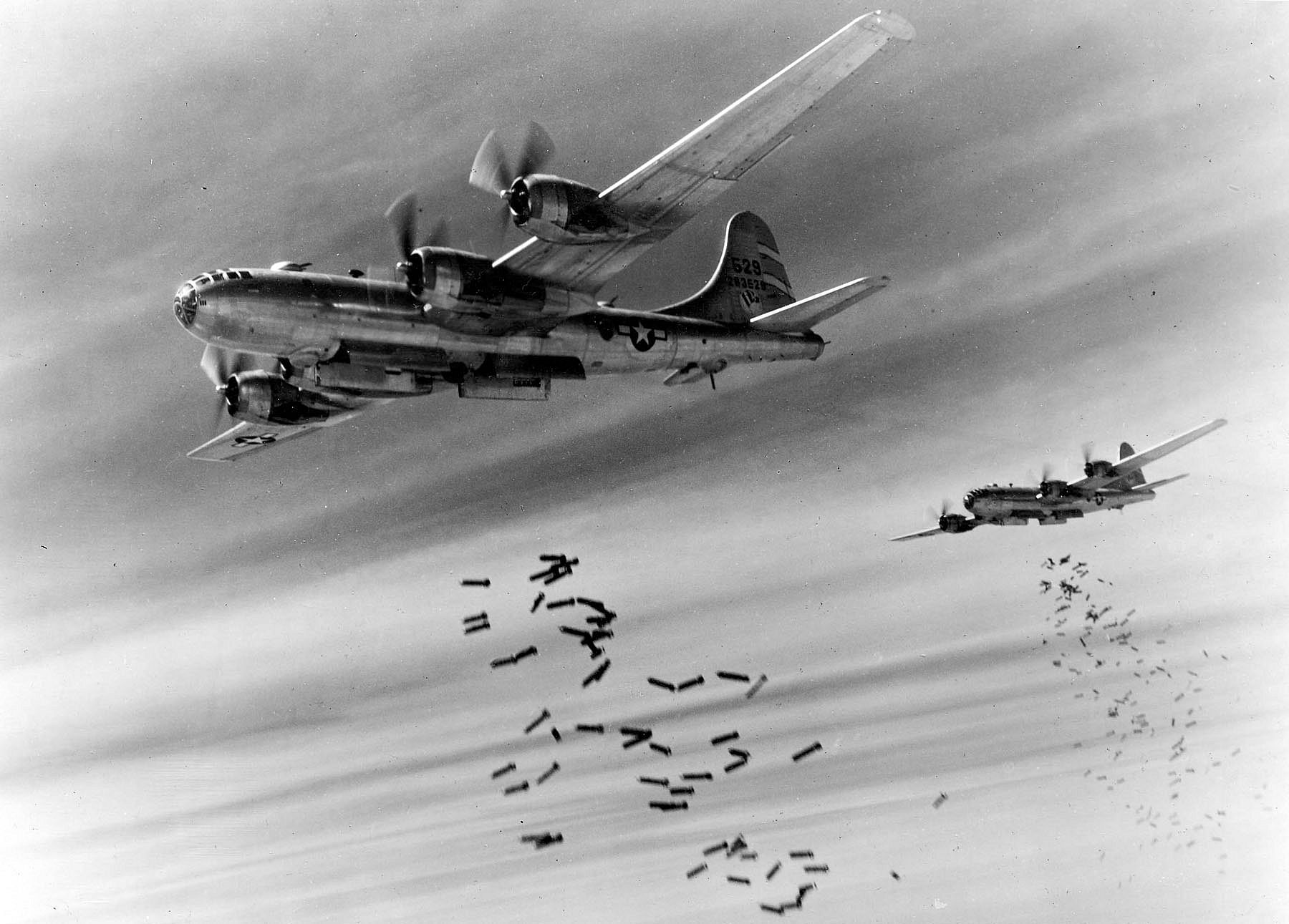
Air warfare of World War II
Air warfare was a major component in all theaters of World War II and, together with anti-aircraft warfare, consumed a large fraction of the industrial output of the major powers. Germany and Japan depended on air forces that were closely integrated with land and naval forces; the Axis powers downplayed the advantage of fleets of strategic bombers and were late in appreciating the need to defend against Allied strategic bombing. By contrast, Britain and the United States took an approach that greatly emphasized strategic bombing and (to a lesser degree) tactical control of the battlefield by air as well as adequate air defenses. Both Britain and the U.S. built substantially larger strategic forces of large, long-range bombers. Simultaneously, they built tactical air forces that could win air superiority over the battlefields, thereby giving vital assistance to ground troops. The U.S. Navy and Royal Navy also built a powerful naval-air component based on aircraft carriers, as did the Imperial Japanese Navy; these played the central role in the war at sea.[1]
Pre-war planning[edit]
Before 1939, all sides operated under largely theoretical models of air warfare. Italian theorist Giulio Douhet in the 1920s summarised the faith that airmen during and after World War I developed in the efficacy of strategic bombing. Many said it alone could win wars,[2] as "the bomber will always get through". The Americans were confident that the Boeing B-17 Flying Fortress bomber could reach targets, protected by its own weapons, and bomb, using the Norden bombsight, with "pickle barrel" accuracy.[3] Japanese aviation pioneers felt that they had developed the finest naval aviators in the world.
Second Sino-Japanese War[edit]
China, 1937–1944[edit]
The airwar over China were the largest air battles fought since the Great War, involving the first prolonged and massed-deployments of aircraft carriers in support of expeditionary forces, extensive close-air support and air-interdiction strikes, significant use of airpower in the attacks against naval assets, and much of the technological and operational transitioning from the latest biplane fighter designs to the modern monoplane fighter designs.[42] Although largely a forgotten war by Western standards, the significance and impact of the airwar between China and the Empire of Japan cannot be denied; it was the best opportunity for the Western air powers to learn about the might of Japanese aerial and naval military technological prowess, as the West were yet in for a dangerous realization of Japanese air prowess by the end of 1941, when the Empire of Japan expanded into the Pacific.[43]
As the War of Resistance-World War II broke out with the Battle of Shanghai in 1937,[44] the centralized command of the Republic of China Air Force had integrated various former-warlord air force men and machines, as well as overseas-Chinese volunteer aviators into the nominally Nationalist Air Force of China, and coordinating with the Second United Front of the National Revolutionary Army (NRA) and People's Liberation Army (PLA), engaging in massive air-battles, close-air support operations, air-interdiction strikes, facing indiscriminate terror-bombing campaigns against all manners of civilian targets inflicted by the Imperial Japanese Army Air Service and the Imperial Japanese Navy Air Service.[45] The Chinese Air Force equipped with a maximum of only about 300 imported operational combat aircraft at any given time, was stretched thin over a massive area of the northern, eastern, and southern fronts against approximately 1,000 operational combat aircraft of the Imperial Japanese forces supported by their own robust and rapidly developing aviation industry.[46]
Major air battles and skirmishes between the Chinese Air Force and the Japanese Army and Navy air forces continued over a vast range of the Chinese mainland, and beyond, even after the Battle of Shanghai, Battle of Nanking and Battle of Taiyuan were lost by the end of 1937, new frontlines were quickly being drawn at the Battle of Taierzhuang, the Battle of Wuhan, the Battle of Canton, the Battle of South Guangxi/Kunlun Pass, among very many other engagements through 1938 and into 1939.[47][48][49]